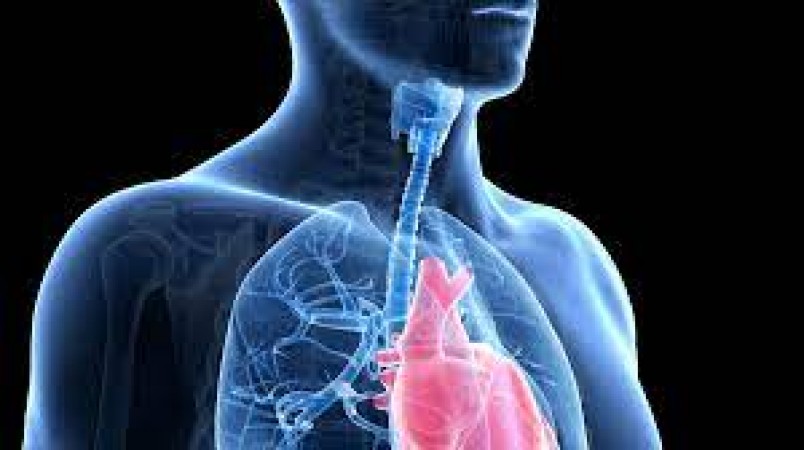
The human respiratory system is a complex network responsible for supplying oxygen to the body and expelling carbon dioxide. While many people are familiar with common respiratory issues like asthma and bronchitis, there exist rare lung diseases that require special attention. In this article, we delve into the depths of three lesser-known pulmonary conditions: Pulmonary Hypertension, Lymphangioleiomyomatosis (LAM), and Primary Ciliary Dyskinesia (PCD). Let's explore each of these rare lung diseases and gain insights into their causes, symptoms, diagnosis, and available treatments. While common respiratory ailments like the flu or allergies often grab the spotlight, rare lung diseases can have a profound impact on individuals' lives. These diseases, though infrequently encountered, demand our attention due to their complexity and potential severity.
Understanding Pulmonary Hypertension
What is Pulmonary Hypertension?
Pulmonary Hypertension is a condition characterized by high blood pressure within the pulmonary arteries, the vessels responsible for carrying blood from the heart to the lungs. This elevated pressure forces the heart to work harder, leading to potential heart failure and respiratory complications.
Types of Pulmonary Hypertension
There are five main types of Pulmonary Hypertension, each with distinct causes and progression. These include Pulmonary Arterial Hypertension (PAH), Pulmonary Hypertension due to Left Heart Disease, Pulmonary Hypertension caused by Lung Disease, Chronic Thromboembolic Pulmonary Hypertension, and Pulmonary Hypertension with Unclear or Multifactorial Mechanisms.
Causes and Risk Factors
Pulmonary Hypertension can stem from various factors, such as genetics, underlying health conditions, and exposure to certain drugs or toxins. Individuals with a family history of the disease, connective tissue disorders, or other heart and lung issues are at a higher risk.
Lymphangioleiomyomatosis (LAM) Explained
Unraveling Lymphangioleiomyomatosis (LAM)
Lymphangioleiomyomatosis, often abbreviated as LAM, is an unusual lung disease that primarily affects women. It involves an abnormal growth of smooth muscle cells in the lungs, which leads to the formation of cysts and ultimately impairs lung function.
Signs and Symptoms
LAM can manifest with symptoms like shortness of breath, chest pain, and recurrent lung collapses. Due to its rarity, the condition is often misdiagnosed or overlooked, delaying proper treatment.
Diagnosis and Prognosis
Diagnosing LAM involves a combination of imaging tests, lung function assessments, and biopsies. While LAM has no cure, early diagnosis and targeted therapies can help manage symptoms and slow down disease progression.
Primary Ciliary Dyskinesia (PCD) Unveiled
The Role of Cilia in the Respiratory System
Cilia are tiny hair-like structures that line the respiratory tract, playing a crucial role in clearing mucus and debris from the airways. Primary Ciliary Dyskinesia (PCD) is a genetic disorder that affects cilia function, leading to respiratory infections and lung damage.
Identifying Primary Ciliary Dyskinesia (PCD)
PCD often presents with chronic respiratory symptoms, including persistent cough, nasal congestion, and frequent lung infections. Since these symptoms overlap with other conditions, diagnosing PCD requires specialized tests and evaluations.
Impact on Lung Health
The impaired cilia function in PCD results in compromised lung clearance mechanisms, allowing bacteria and mucus to accumulate. Over time, this can lead to chronic respiratory issues and lung damage.
Comparing the Three Diseases
Shared and Unique Characteristics
While Pulmonary Hypertension, LAM, and PCD are distinct diseases, they share the common theme of affecting the respiratory system. They vary in their causes, underlying mechanisms, and treatments, highlighting the need for accurate diagnosis and tailored management approaches.
Challenges in Diagnosis
The rarity of these diseases often leads to misdiagnosis or delayed diagnosis. Healthcare professionals need to be vigilant and consider these conditions, especially when patients exhibit symptoms that do not align with more common respiratory issues.
Medical Approaches to Treatment
Pulmonary Hypertension Treatment Options
The treatment of Pulmonary Hypertension depends on the specific type and severity. Medications, lifestyle changes, and in some cases, surgery, are all potential avenues to manage symptoms, improve quality of life, and extend survival.
Managing Lymphangioleiomyomatosis (LAM)
LAM treatment focuses on slowing the growth of cysts and improving lung function. Medications, oxygen therapy, and lung transplantation are options for those with advanced disease.
Strategies for Primary Ciliary Dyskinesia (PCD)
PCD management involves a multidisciplinary approach, including airway clearance techniques, medications, and preventive measures to reduce the risk of respiratory infections.
Lifestyle Considerations
Importance of Lifestyle Modifications
Individuals with rare lung diseases can benefit from lifestyle adjustments to enhance their overall well-being. Quitting smoking, staying active, and maintaining a balanced diet can have positive effects on lung health.
Exercise and Pulmonary Rehabilitation
Engaging in regular exercise and participating in pulmonary rehabilitation programs can help individuals improve their lung capacity, endurance, and quality of life.
Research and Innovations
Advancements in Rare Lung Disease Research
Ongoing research efforts aim to uncover the underlying mechanisms of these diseases and identify potential therapeutic targets. Collaborative initiatives have led to a deeper understanding of disease progression and new treatment avenues.
Promising Therapies on the Horizon
Several innovative therapies are under investigation, ranging from targeted medications to gene therapies. These advancements hold promise for enhancing the quality of life and prognosis for individuals with rare lung diseases.
Coping with Rare Lung Diseases
Psychological and Emotional Impact
Living with a rare lung disease can take a toll on mental well-being. Individuals may experience anxiety, depression, and feelings of isolation. Building a strong support network and seeking professional help can be beneficial.
Support Networks and Resources
Numerous patient advocacy groups, online communities, and resources offer valuable information, emotional support, and a platform for individuals and their families to connect and share experiences. Rare lung diseases like Pulmonary Hypertension, Lymphangioleiomyomatosis (LAM), and Primary Ciliary Dyskinesia (PCD) highlight the complexity of the respiratory system and the challenges of accurate diagnosis and management. As medical research continues to advance, individuals affected by these conditions can look forward to improved understanding, innovative treatments, and a brighter future.
US Federal Reserve Introduces Stricter Oversight on Stablecoins and Crypto Activities
Money-wasting improvements to homes
India's IT Ministry Initiates Contest for Blockchain-Infused Web3 Browser Development